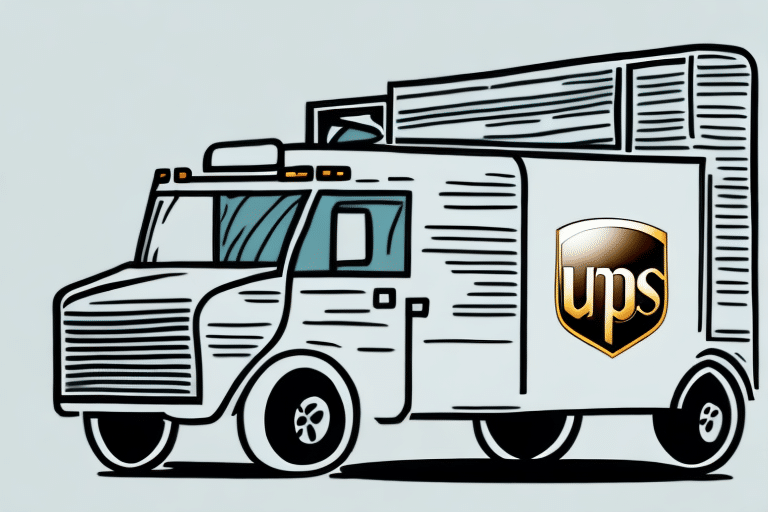Understanding UPS Standard Insurance Coverage
If you're a business owner, chances are you rely on shipping companies like UPS to send and receive packages daily. While shipping is a convenient way to move goods, it comes with certain risks—packages can get damaged, lost, or even stolen. Shipping insurance is essential in mitigating these risks, and UPS offers its own standard insurance coverage to protect your shipments. This article provides an in-depth analysis of UPS Standard Insurance Coverage, offering detailed insights and the latest information you need before shipping your goods.
What is UPS Standard Insurance Coverage?
UPS Standard Insurance Coverage is a type of shipping insurance that protects your packages against loss or damage during transit. This coverage is included in the cost of shipping and is automatically applied to packages up to a certain value. If your package is lost or damaged while shipping, UPS will compensate you for the package's value up to the insured amount.
However, it's important to note that UPS Standard Insurance does not cover certain items, including cash, jewelry, and antiques. For high-value items, it's recommended to purchase additional insurance or use a shipping method that offers more comprehensive coverage. Additionally, UPS may require proof of the package's value and evidence of damage or loss to process a claim. Keeping all relevant documentation and receipts is crucial for filing a successful claim.
Coverage Details of UPS Standard Insurance
What Does It Cover?
UPS Standard Insurance Coverage includes protection against:
- Loss during transit
- Damage caused by accidents
- Natural disasters
- Theft
However, certain items like cash, jewelry, and antiques are excluded from this coverage. Additionally, UPS has specific packaging requirements to ensure coverage validity—packages must be packed and labeled according to their guidelines.
Additional Insurance Options
For items exceeding standard coverage limits, UPS offers additional insurance options:
- Declared Value Coverage: Allows you to declare a higher value for your package, providing coverage up to that amount for an additional fee.
- Excess Value Coverage: Offers additional coverage beyond the declared value, up to a maximum of $50,000 per package.
Carefully consider your insurance needs and budget to choose the most appropriate option.
Cost of UPS Standard Insurance
The cost of UPS Standard Insurance is bundled into the shipping fees for packages valued up to a certain amount, typically ranging from $100 to $1,000 depending on the destination and shipment type. If you require insurance beyond the standard insured amount, additional coverage can be purchased at an extra cost.
It's important to remember that UPS Standard Insurance covers only the package's value during transit and does not include indirect or consequential losses, such as lost profits or income. Certain items may also be ineligible for coverage, so reviewing UPS's terms and conditions is recommended to understand the full extent of the coverage and its limitations.
How to Purchase UPS Standard Insurance
Obtaining UPS Standard Insurance is straightforward:
- When creating your shipping label, indicate the value of your shipment.
- UPS will automatically apply the appropriate coverage based on the package's value.
- If additional insurance is needed, select the desired insurance option for an extra fee.
For international shipments, be aware of any restrictions or limitations on insurable items. Some countries may prohibit insurance for specific items like jewelry or electronics. Always check with UPS or the destination country's customs office to ensure your package qualifies for insurance before proceeding.
Limitations of UPS Standard Insurance
While UPS Standard Insurance provides valuable protection, it has certain limitations:
- Coverage is limited to loss or damage during shipping and does not extend to issues like improper packaging or mishandling after delivery.
- Exclusions include cash, jewelry, antiques, and collectibles.
- The maximum declared value is $100 per package or $1,000 per shipment. Packages exceeding these amounts require additional insurance.
Understanding these limitations is crucial for ensuring that your shipments are adequately protected.
Filing a Claim with UPS Standard Insurance
Steps to File a Claim
- Notify UPS of the damage or loss within the specified time frame as per the UPS Tariff/Terms and Conditions of Service.
- Provide evidence of the package's value and documentation of the damage or loss.
- Include photos of the damaged package and a detailed description of the issue.
Ensure that you retain all packaging materials and relevant documentation to support your claim. Detailed and accurate information will facilitate a quicker and more accurate claims process.
Common Reasons for Claim Denial
- Inadequate packaging.
- Failure to file the claim within the required time frame.
- Package value exceeding the insured amount.
Reviewing and understanding your insurance policy before shipping can help prevent these common pitfalls.
When to Consider Additional Insurance Options
If you're shipping high-value items or items excluded from UPS Standard Insurance, additional coverage may be necessary. Consider the following options:
- Private Insurance Companies: These specialize in shipping insurance and may offer higher coverage limits and lower deductibles.
- Credit Card Protection: Some credit cards provide purchase protection for items bought using the card.
Evaluate your shipment's value, destination, and risk factors to determine if additional insurance is warranted.
Comparing UPS Standard Insurance to Other Options
There are various shipping insurance options available beyond UPS Standard Coverage:
- Private Insurers: Often provide more comprehensive coverage for high-value or excluded items.
- Credit Card Benefits: Offer purchase protection that may cover shipping risks.
Comparing these options can help you find the best coverage for your specific shipping needs.
How to Save Money on Shipping Insurance
Reducing shipping insurance costs can be achieved through several strategies:
- Choose Cost-Effective Carriers: Some carriers offer lower insurance rates.
- Proper Packaging: Ensuring adequate packaging can minimize the risk of damage, potentially lowering insurance costs.
- Self-Insure: For lower-value items, setting aside a portion of your budget for potential losses can be a cost-effective alternative.
Frequently Asked Questions About UPS Standard Insurance
Q: What items are excluded from UPS Standard Insurance coverage?
A: Cash, jewelry, antiques, and collectibles are excluded from coverage.
Q: What is the maximum insured amount for UPS Standard Insurance?
A: The maximum insured amount typically ranges from $100 to $1,000, depending on the destination and type of shipment.
Q: What should I do if my package is lost or damaged during shipment?
A: File a claim with UPS within the time frame specified in the UPS Tariff/Terms and Conditions of Service.
Case Studies: Claims with UPS Standard Coverage
Successful claims often depend on adequate packaging, timely filing, and accurate valuation of the package. Common reasons for denied claims include:
- Inadequate packaging
- Failure to file within the specified time frame
- Value of the item exceeding the insured amount
Understanding these factors can improve the likelihood of a successful claim.
The Importance of Reviewing Shipping Insurance Policies
Before shipping your goods, thoroughly review and understand the terms of your shipping insurance policy. This will help you:
- Know what is covered and what is excluded.
- Understand packaging and labeling requirements.
- Be prepared to file a claim if necessary.
By being informed, you can ensure that your packages are adequately protected during transit.
Navigating the Claims Process with UPS
If your package is lost or damaged during shipment, navigating the claims process is essential:
- Follow UPS's guidelines for filing a claim.
- Provide evidence of the package's value and evidence of damage or loss.
- Ensure that the packaging and labeling meet UPS's requirements to avoid denial of coverage.
Properly documenting and presenting your case can expedite the claims process and increase the chances of a successful outcome.
The Role of Packaging and Labeling in Insurance Coverage
Your packaging and labeling play a critical role in UPS insurance coverage:
- Packaging: Must comply with UPS guidelines to ensure coverage validity. Inadequate packaging can lead to damage claims being denied.
- Labeling: Accurate labeling ensures that packages are delivered correctly, reducing the risk of loss or misdelivery.
Investing time in proper packaging and labeling can significantly enhance the protection of your shipments.
Conclusion
Shipping insurance is a crucial consideration for any business that relies on shipping goods. UPS Standard Insurance Coverage offers valuable protection, but it's essential to understand its limitations and requirements. By thoroughly researching and comprehending your insurance policy, you can ensure that your packages are safeguarded during transit, providing peace of mind and financial protection for your business.






















